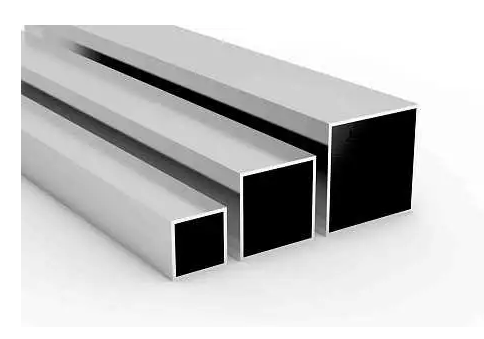Application of high-end aluminum alloy materials in aviation and aerospace
Application of high-end aluminum alloy materials in aviation and aerospace
Blog Article
The use of aluminum alloys in the aerospace field does play a very important role. This is mainly because aluminum alloys have a series of ideal physical and mechanical properties, including high strength, light weight, good corrosion resistance and excellent processing performance. These characteristics make aluminum alloys an ideal material for manufacturing aircraft, rockets, satellites and other aerospace vehicles.
In order to meet the special needs of the aerospace field, researchers continue to improve and optimize aluminum alloys. Among them, 2000 series and 7000 series aluminum alloys are the two most commonly used series. Both series of aluminum alloys have high strength and good toughness, but they differ in composition and performance.
The 2000 series aluminum alloy mainly contains copper and magnesium elements, which gives it good strength and toughness, as well as good corrosion resistance. This aluminum alloy is usually used to manufacture aircraft structural parts, such as wings, fuselages, etc.
The 7000 series aluminum alloy contains more zinc elements, which gives it higher strength and hardness. This aluminum alloy is usually used to manufacture parts that need to withstand extremely high stress, such as aircraft landing gear and certain parts of the engine.
In addition to traditional aluminum alloys, researchers are constantly exploring and developing new aluminum alloy materials. For example, through innovative production processes such as powder metallurgy and injection molding, lightweight aluminum alloy materials with better performance can be manufactured. In addition, aluminum-based composite materials and superplastic aluminum alloy materials are also hot topics of current research. These new materials have higher specific strength and better corrosion resistance, which can further improve the performance and safety of aerospace vehicles.
The application prospects of aluminum alloys in the aerospace field are still very broad. With the advancement of science and technology and the continuous development of materials science, we can expect that more new aluminum alloy materials with excellent performance will be developed in the future, making greater contributions to the development of the aerospace industry.
The performance requirements of aluminum alloy materials for different parts of the aircraft are different, so precise material selection is required. 2X24, 7X75, 7X5X, etc. are commonly used aluminum alloy grades in the aviation field. They have different chemical compositions and mechanical properties to meet the needs of different parts of the aircraft.
2X24 aluminum alloy is a high-strength, corrosion-resistant aluminum alloy with good processing and welding properties. It is mainly used to manufacture aircraft structural parts such as wings, fuselages, tails, etc.
7X75 aluminum alloy is a high-strength, high-toughness aluminum alloy with good fatigue resistance and corrosion resistance. It is mainly used to manufacture important load-bearing parts of aircraft, such as landing gear, engine parts, etc.
7X5X aluminum alloy is a high-strength, high-toughness aluminum alloy with good fatigue resistance and corrosion resistance. It is mainly used to manufacture aircraft structural parts and load-bearing parts, such as wings, fuselages, landing gears, etc.
With the continuous improvement of aluminum alloy material technology, new aluminum alloy materials are constantly emerging. In order to meet the needs of different parts of the aircraft, researchers continue to explore and develop new aluminum alloy grades. These new aluminum alloy materials have higher strength, better toughness, better corrosion resistance and higher processing performance, which can further improve the performance and safety of the aircraft.
In aviation equipment, different parts have precise selection requirements for the selection of aluminum alloy materials. With the continuous advancement of technology and the continuous development of materials science, we can expect that more new aluminum alloy materials will be developed in the future, making greater contributions to the development of aviation.
The application of aluminum alloys in launch vehicles and manned aircraft in the aerospace field is indeed very extensive. These aluminum alloy materials have a series of excellent physical and mechanical properties, including high strength, light weight, corrosion resistance and good processing performance, making them ideal materials for manufacturing aerospace structures and components.

In terms of launch vehicles, the main grades of aluminum alloys include 7075, 20X4 and 2219. These aluminum alloys have different chemical compositions and mechanical properties to meet the needs of different parts. For example, the engine device, main parts, rotating table and remote control parts mainly use aluminum alloy 7075 because this aluminum alloy has high strength and good corrosion resistance. The liquid oxygen tank mainly uses 2219 aluminum alloy because this aluminum alloy has good low temperature performance and corrosion resistance. In addition, 20X4 aluminum alloy is mainly used for satellite streamlined outer cover and temperature control valve parts because this aluminum alloy has good processing performance and fatigue resistance.
In terms of manned spacecraft, aluminum alloys are also widely used. The skeleton structure is mainly made of 2024 and 7075 aluminum alloys. Both aluminum alloys have high strength, light weight and good processing performance, making them ideal materials for manufacturing skeleton structures. In addition, aluminum alloy sheets are also widely used in other parts of manned aircraft, such as protective plates, safety devices and thrusters.
Aluminum alloys are widely used in launch vehicles and manned aircraft in the aerospace field, and they have made important contributions to improving the performance and safety of aerospace vehicles. With the continuous advancement of technology and the continuous development of materials science, we can expect that more new aluminum alloy materials will be developed in the future, making greater contributions to the development of the aerospace industry.
Report this page